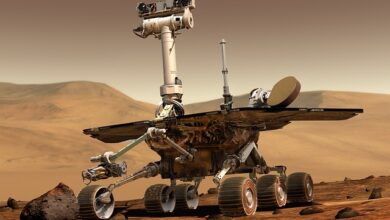The Role of AI in Climate Change Mitigation Strategies

AI – the powerhouse of innovation, an ally in our battle against climate change. In today’s world, where the environment is facing unprecedented challenges, the integration of Artificial Intelligence (AI) has emerged as a game-changer in climate change mitigation strategies. But what exactly is the role of AI in this grand pursuit? Let’s delve into the details.
Firstly, AI enables accurate and efficient data analysis, empowering scientists and policymakers to better understand the complexities of climate change. By processing vast amounts of climate data, AI algorithms can detect patterns, identify correlations, and make predictions with remarkable precision. This invaluable information helps us comprehend the causes and consequences of global warming, aiding in the development of targeted mitigation plans.
Moreover, AI enhances our ability to monitor and manage environmental resources. From satellite imagery to ground-based sensors, AI-powered systems can collect real-time data on various factors like temperature, air quality, and deforestation rates. By continuously monitoring these variables, we can identify areas of concern, take proactive measures, and track the effectiveness of our interventions. It’s like having a vigilant guardian, always watching over our planet.
Additionally, AI facilitates the optimization of energy consumption and distribution. Smart grids, powered by AI algorithms, can analyze energy usage patterns, predict peak demands, and dynamically allocate resources accordingly. By intelligently managing energy supply, we can reduce waste, improve efficiency, and promote the integration of renewable energy sources. Imagine a symphony conductor directing each instrument to create harmonious melodies while minimizing energy discordance.
Furthermore, AI plays a crucial role in climate modeling and simulation. Complex climate models require extensive computational power and sophisticated algorithms to simulate future scenarios accurately. AI, with its ability to process massive datasets and perform complex calculations, enables us to create more reliable models, project climate trends, and assess the potential impact of different policy measures. It’s like peering through a crystal ball, gaining insights into our planet’s possible future.
AI has emerged as a powerful tool in our fight against climate change. Its ability to analyze data, monitor resources, optimize energy usage, and enhance climate modeling empowers us to develop effective mitigation strategies. As we embrace the potential of AI, we embark on a transformative journey where technology becomes our ally, supporting us in safeguarding the environment for future generations. Together, humanity and AI can navigate the complex challenges posed by climate change, charting a sustainable path towards a greener future.
AI Innovations: Revolutionizing Climate Change Mitigation Strategies
Introduction:
Are you ready for a breakthrough in the battle against climate change? Artificial Intelligence (AI) is here to revolutionize our approach to mitigating the effects of this global crisis. With its remarkable capabilities, AI offers innovative solutions that can transform the way we tackle climate change. In this article, we will explore how AI innovations are reshaping climate change mitigation strategies and paving the way for a sustainable future.
Harnessing Big Data:
One of the key strengths of AI lies in its ability to process vast amounts of data quickly and accurately. Through advanced algorithms, AI can analyze complex climate data gathered from various sources such as satellites, sensors, and social media platforms. By crunching these numbers, AI uncovers invaluable insights and patterns, enabling scientists and policymakers to make informed decisions. Just imagine having real-time information about carbon emissions, deforestation rates, and weather patterns at our fingertips!
Optimizing Energy Efficiency:
AI is making significant strides in optimizing energy efficiency across industries. Machine learning algorithms can analyze energy consumption patterns, identify inefficiencies, and suggest improvements. For example, smart energy systems powered by AI can regulate energy usage in buildings, adjusting temperature and lighting based on occupancy and external conditions. This not only reduces carbon footprint but also saves costs in the long run. AI-driven technologies are even being used to optimize renewable energy generation, helping us transition to a cleaner and more sustainable energy mix.
Enhancing Climate Modeling:
Accurate climate modeling is crucial for understanding the impact of human activities on the environment and predicting future scenarios. AI is enhancing climate models by incorporating immense amounts of data and improving their accuracy. These advanced models can simulate complex climate processes, assess potential risks, and evaluate the effectiveness of different mitigation strategies. With AI, we can gain a deeper understanding of the Earth’s intricate climate system and devise more effective measures to combat climate change.
Mitigating Natural Disasters:
The increasing frequency and intensity of natural disasters pose a significant threat to our planet. AI is playing a pivotal role in mitigating these disasters by enabling early detection and response. Through advanced image recognition algorithms, AI can analyze satellite imagery and identify potential disaster zones. This allows authorities to take timely measures such as evacuations and resource mobilization. Additionally, AI-powered predictive models can forecast extreme weather events, helping communities prepare and adapt to changing conditions.
Conclusion:
Artificial Intelligence is revolutionizing climate change mitigation strategies by harnessing big data, optimizing energy efficiency, enhancing climate modeling, and mitigating the impact of natural disasters. These innovations provide us with powerful tools to combat climate change and build a sustainable future. By embracing AI technologies and integrating them into our environmental efforts, we can make significant strides towards preserving our planet for generations to come. The time to act is now – let’s join forces with AI and create a greener, more resilient world.
Harnessing the Power of AI: Advancing Climate Solutions in the Face of Crisis
Introduction:
Imagine a world where technology comes to the rescue in the face of climate crisis. Thanks to the incredible progress in Artificial Intelligence (AI), we now have a powerful tool at our disposal to tackle the pressing challenges posed by climate change. AI is revolutionizing the way we approach environmental issues, offering innovative solutions and transforming industries across the globe.
The Potential of AI:
With its ability to process vast amounts of data quickly and make accurate predictions, AI holds immense potential in advancing climate solutions. By analyzing complex environmental data sets, AI algorithms can identify patterns, detect anomalies, and derive valuable insights to support decision-making processes. Whether it’s predicting weather patterns, optimizing energy consumption, or monitoring ecosystem health, AI has the capacity to enhance our understanding of the environment and guide more informed action.
Climate Modeling and Prediction:
AI-driven climate models are instrumental in forecasting future scenarios and aiding in climate prediction. These models incorporate historical data, atmospheric conditions, and greenhouse gas emissions to simulate various climate outcomes. By accurately predicting changes in temperature, precipitation, and sea levels, these models facilitate proactive planning, enabling communities to adapt to and mitigate the effects of climate change. AI also helps in identifying regions at higher risks, allowing for targeted interventions and resource allocation.
Energy Efficiency and Sustainable Practices:
AI plays a crucial role in optimizing energy consumption and promoting sustainable practices. Smart grid systems leverage AI algorithms to analyze energy usage patterns, predict demand fluctuations, and efficiently distribute power. AI-powered sensors and devices enable real-time monitoring and control of energy-intensive processes, reducing waste and optimizing resource utilization. Furthermore, AI assists in designing energy-efficient buildings, optimizing transportation routes, and developing renewable energy solutions, leading us towards a more sustainable future.

Conservation and Ecosystem Management:
Preserving biodiversity and safeguarding ecosystems are paramount in addressing climate change. AI tools aid in monitoring and managing natural resources effectively. For instance, AI-powered drones and satellites enable remote sensing, helping track deforestation, wildlife migration patterns, and illegal activities. By analyzing vast amounts of data, AI algorithms can assist in habitat restoration, species protection, and sustainable land management.
Conclusion:
Harnessing the power of AI is key to advancing climate solutions and mitigating the environmental challenges we face today. From climate modeling to energy optimization and conservation efforts, AI offers a wide array of applications that can drive transformative change. By embracing this technology and collaborating across sectors, we have the opportunity to leverage AI’s potential and build a sustainable future for generations to come. Let us seize this moment to act decisively and make a positive impact on our planet.
From Data to Action: How AI is Driving Effective Climate Change Mitigation
In the fight against climate change, information is power. And when it comes to harnessing the full potential of data for effective climate change mitigation, artificial intelligence (AI) emerges as a game-changer. With its ability to process vast amounts of information and uncover hidden patterns, AI offers a crucial tool in our efforts to tackle this global challenge.
AI’s role in climate change mitigation begins with data collection. By utilizing sensors, satellites, and IoT devices, we can gather an immense volume of environmental data. From temperature and air quality measurements to deforestation rates and carbon emissions, these data points provide a comprehensive understanding of our planet’s changing dynamics.
Once the data is collected, AI algorithms kick into action, sifting through the vast datasets to identify meaningful insights. These algorithms excel at recognizing complex patterns and correlations that may elude human analysis. They help us uncover the causes and consequences of climate change, enabling informed decision-making and targeted interventions.

One area where AI demonstrates tremendous potential is climate modeling. By feeding historical and current data into sophisticated models, AI can simulate future scenarios and predict the impact of different mitigation strategies. This predictive capability empowers policymakers, allowing them to assess the effectiveness of measures before implementation and optimize resource allocation accordingly.

Moreover, AI facilitates better resource management and conservation efforts. Machine learning algorithms can analyze energy consumption patterns and identify areas of inefficiency, helping to reduce waste and promote sustainable practices. AI-powered systems can also optimize renewable energy production, maximizing output while minimizing environmental impact.
In addition to its analytical prowess, AI enhances climate change mitigation through innovative solutions. For example, autonomous drones equipped with AI algorithms can monitor and combat deforestation by identifying illegal logging activities in real-time. AI-powered robots can assist in ecological restoration by autonomously planting trees or removing invasive species, accelerating reforestation efforts.
The power of AI lies not only in its ability to process data but also in its potential to inspire action and foster collaboration. By analyzing social media trends and public sentiment, AI algorithms can identify influencers and target messaging to drive widespread awareness and engagement. Furthermore, AI platforms facilitate knowledge sharing and collaboration among researchers and policymakers worldwide, enabling collective efforts towards a sustainable future.

AI is revolutionizing climate change mitigation by transforming data into actionable insights. Its analytical capabilities, predictive modeling, resource management optimization, and innovative solutions are key drivers in our quest to combat climate change effectively. With AI as our ally, we can leverage the power of information and take decisive actions towards a more sustainable and resilient planet. Let us embrace this technological marvel and work together to secure a better future for generations to come.
Unleashing the Potential: AI’s Role in Transforming Climate Change Strategies

As we stand at the crossroads of environmental challenges, there is a pressing need for innovative solutions to tackle climate change head-on. In this pursuit, an emerging superhero has arrived: Artificial Intelligence (AI). With its unmatched ability to process vast amounts of data and make intelligent decisions, AI is revolutionizing the way we approach climate change strategies.
Picture this: AI as a dynamic ally, tirelessly scanning through mountains of climate data, identifying patterns, and extracting valuable insights. By analyzing historical trends and real-time information, AI empowers scientists and policymakers to develop proactive measures. It acts as a guiding light, illuminating the most effective paths towards sustainable development.
Like a skilled detective, AI uncovers hidden connections between climate variables that may have eluded human observation. By recognizing intricate patterns within complex systems, it reveals the interdependencies of various factors contributing to climate change. Armed with this knowledge, decision-makers can design targeted interventions that address the root causes of environmental degradation.
Moreover, AI-enabled predictive models serve as crystal balls, forecasting future climate scenarios with remarkable accuracy. By simulating different scenarios, AI provides invaluable foresight, enabling us to anticipate potential disasters and take preventive action. It’s like having a weather forecaster who can predict extreme events such as hurricanes or droughts, allowing communities to brace themselves and minimize damage.
But AI’s role doesn’t end there. It extends beyond data analysis and prediction. Through machine learning algorithms, AI becomes a powerful teacher, continuously refining its understanding of environmental processes. Like a nurturing parent, it educates itself on climate intricacies, gaining insights from its mistakes and successes. This self-improvement loop creates a positive feedback mechanism, enhancing AI’s capabilities over time.
Furthermore, AI offers practical solutions for mitigating our carbon footprint. From optimizing energy consumption to promoting renewable sources, AI drives efficiency gains across industries. It helps businesses optimize their processes, reduce waste, and make smarter decisions that benefit both the environment and the bottom line.




